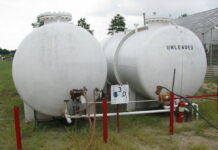Photo credit: DiasporaEngager (www.DiasporaEngager.com).
| 2019 | January | 2.2 |
|---|---|---|
| 2019 | February | 2.6 |
| 2019 | March | 2.8 |
| 2019 | April | 2.9 |
| 2019 | May | 2.4 |
| 2019 | June | 2.7 |
| 2019 | July | 2.5 |
| 2019 | August | 2.8 |
| 2019 | September | 2.6 |
| 2019 | October | 2.7 |
| 2019 | November | 2.6 |
| 2019 | December | 2.7 |
| 2020 | January | 1.8 |
| 2020 | February | 1.6 |
| 2020 | March | 1.4 |
| 2020 | April | 1.2 |
| 2020 | May | 1.2 |
| 2020 | June | 1.6 |
| 2020 | July | 1.7 |
| 2020 | August | 0.7 |
| 2020 | September | 1.1 |
| 2020 | October | 1.2 |
| 2020 | November | 0.8 |
| 2020 | December | 1 |
| 2021 | January | 1.6 |
| 2021 | February | 1.8 |
| 2021 | March | 1.9 |
| 2021 | April | 1.9 |
| 2021 | May | 2.1 |
| 2021 | June | 2 |
| 2021 | July | 1.4 |
| 2021 | August | 2.4 |
| 2021 | September | 2.7 |
| 2021 | October | 3.4 |
| 2021 | November | 5.2 |
| 2021 | December | 5.7 |
| 2022 | January | 6.4 |
| 2022 | February | 6.2 |
| 2022 | March | 9.7 |
| 2022 | April | 9.6 |
| 2022 | May | 8.8 |
| 2022 | June | 8.6 |
| 2022 | July | 10.3 |
| 2022 | August | 12 |
| 2022 | September | 14.5 |
| 2022 | October | 14.3 |
| 2022 | November | 9.9 |
| 2022 | December | 9.6 |
| 2023 | January | 7.6 |
| 2023 | February | 8 |
| 2023 | March | 4.4 |
| 2023 | April | 5.2 |
| 2023 | May | 6.1 |
| 2023 | June | 5.7 |
| 2023 | July | 4.6 |
| 2023 | August | 3 |
| 2023 | September | 0.2 |
| 2023 | October | -0.4 |
| 2023 | November | 1.6 |
| 2023 | December | 1.2 |
| 2024 | January | 3.2 |
| 2024 | February | 2.8 |
Price changes in product groups
In addition to the inflation rate, CBS also publishes price changes for a number of product groups as part of its flash estimate. These product groups are aggregations of spending categories for a particular theme, such as ‘all services’. The price changes for all the categories in the CPI will be published on 12 March.
| All items | 2.8 | 3.2 |
|---|---|---|
| Non-energy industrial goods | -0.6 | 0.3 |
| Energy including motor fuels | 1.1 | -2.5 |
| Food, beverages and tobacco | 2.7 | 4.1 |
| Services | 4.5 | 4.8 |
New method for measuring energy prices
Since June 2023, CBS has been using a new method to measure energy prices and incorporate them into the CPI. On 30 June, CBS published a background article explaining in more detail what the new method means for the CPI, the inflation rate and the use of the CPI for indexation purposes.
HICP flash estimate
CBS publishes two different figures for inflation. One is based on the Consumer Price Index (CPI) and the other on the European Harmonised Index of Consumer Prices (HICP). According to the HICP flash estimate, inflation stood at 2.7 percent in February. In January, that figure was 3.1 percent.
In order to facilitate comparison between countries, EU member states calculate a consumer price index according to internationally agreed definitions and methods. Based on these harmonised indices (HICP) for all EU countries, Eurostat calculates the inflation rates for the eurozone and the EU as a whole. The European Central Bank (ECB) uses the HICP to formulate its monetary policies for the euro area. In addition, most countries produce a national consumer price index.
In the case of the Netherlands, the main difference between the CPI and the HICP is that the HICP does not take account of costs related to home ownership, while the CPI does. In the CPI, these costs are calculated based on changes in rents for housing. However, this is not the only difference. All the differences are explained in greater detail in this article.
Source of original article: Statistics Netherlands (CBS) (www.cbs.nl).
The content of this article does not necessarily reflect the views or opinion of Global Diaspora News (www.GlobalDiasporaNews.com).
To submit your press release: (https://www.GlobalDiasporaNews.com/pr).
To advertise on Global Diaspora News: (www.GlobalDiasporaNews.com/ads).
Sign up to Global Diaspora News newsletter (https://www.GlobalDiasporaNews.com/newsletter/) to start receiving updates and opportunities directly in your email inbox for free.































